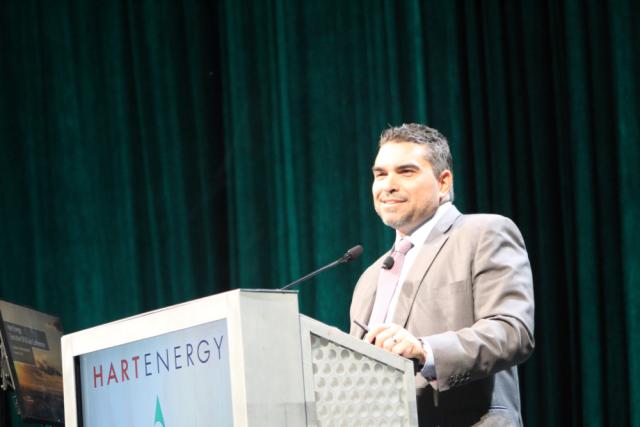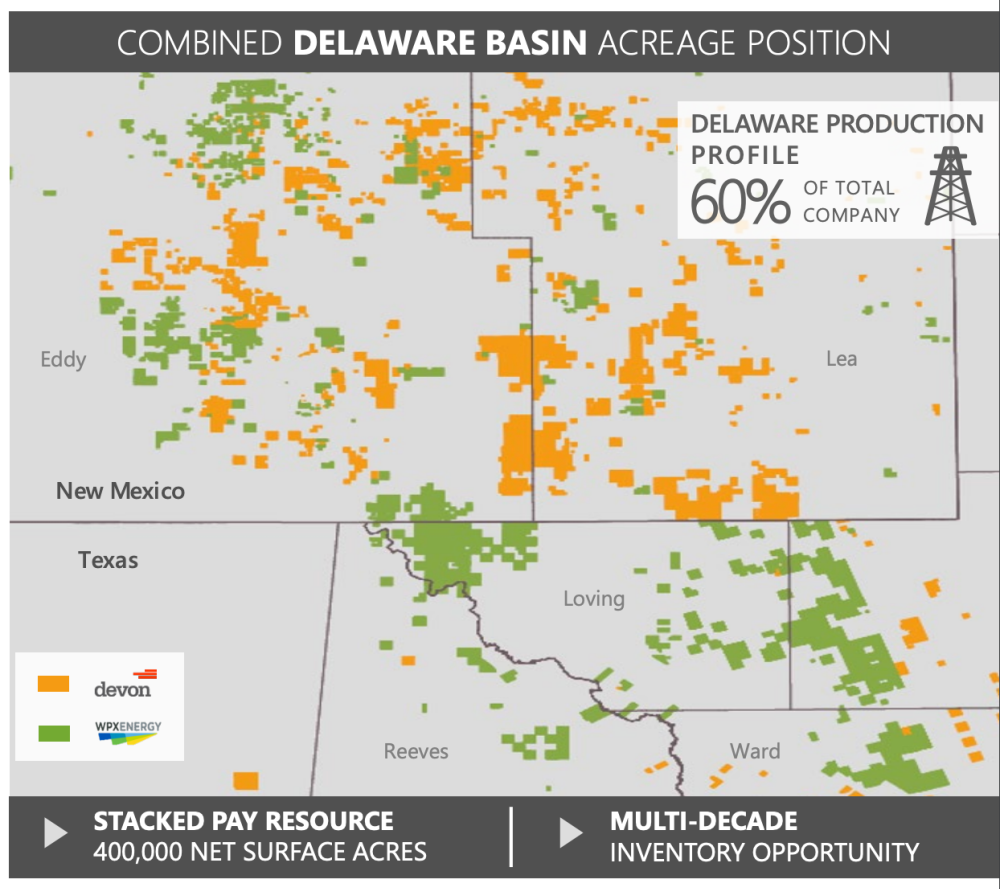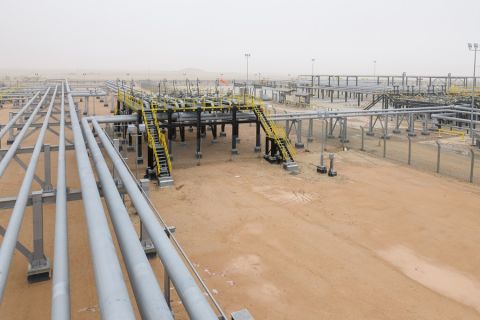
“This is the heart of our company and really the future of our organization,” Devon Energy COO Clay Gaspar said of the company’s Permian position at the kickoff of Hart Energy’s Executive Oil Conference on Nov. 4. (Source: Hart Energy)
MIDLAND, Texas—Roughly a year after announcing its merger with WPX Energy, Devon Energy Inc. continues to prove the $5.75 billion all-stock combination is paying off in spades.
“Happy to report the team has done a phenomenal job,” Devon Energy COO Clay Gaspar told attendees of Hart Energy’s Executive Oil Conference, “continued to execute and I look forward to ‘22 and beyond.”
Gaspar, formerly on the WPX executive team, provided insight during his opening keynote address on Nov. 4 into the Devon/WPX merger one year later plus the importance of its position in the Permian Basin.
“This is the heart of our company and really the future of our organization,” Gaspar said of Devon’s Permian position where the deal with WPX doubled its footprint, all located within the Delaware Basin.
“Clearly, we are a Delaware Basin/Permian-centric organization,” he also said. “About 70% of our production, about 80% of our capital, about 70% of our upside potential or remaining inventory is in the Permian, specifically in the Delaware Basin.”

Despite Devon’s roughly 400,000 net-acre position in the Delaware Basin, Gaspar didn’t discredit the importance of the remaining assets in the new Devon portfolio located in four other basins—the Anadarko, Powder River, Williston and Eagle Ford Shale.
The Williston Basin, in particular, is going to generate $700 million of free cash flow for Devon this year alone, according to Gaspar.
“Remember free cash flow is king... That’s core to our business,” he said. “That is a huge contribution to who we are as an organization.”
Devon’s cash-return strategy, the basis of its decision to merge with WPX, was evidenced by another quarter of operational and financial outperformance.
On Nov. 2, the company reported its third-quarter earnings, greatly exceeding Wall Street expectations. Devon’s free cash flow generation for the quarter, quite notably, accelerated to $1.1 billion, an eight-fold increase from fourth-quarter 2020.
Devon followed up the news of its achievement last quarter with authorization of a $1 billion share-repurchase program representing 4% of its market cap.
Gaspar noted the ability to build a business that is both low growth and able to generate significant free cash flow was key to Devon and WPX’s agreement to combine.
“A little secret, part of the job of a CEO is always exploring opportunities,” he said. “Every opportunity out there, it is incumbent that these are evaluated and considered.”
The seed of the merger between Devon and WPX was first planted in the spring of 2019 when the two CEOs, Dave Hager and Rick Muncrief, respectively, met to discuss the benefits of a possible combination.
However, it wasn’t until the summer of 2020, during the depths of the global demand downturn, that the Oklahoma City and Tulsa-based producers came together again to discuss a merger of equals, according to Muncrief, who took the helm as Devon CEO when the transaction closed in January 2021, in an interview featured in a recent issue of Oil and Gas Investor.

During his presentation on Nov. 4, Gaspar noted that, in certain M&A transactions, companies may feel forced to transact due to a debt event or liquidity crunch. That wasn’t the case for Devon or WPX.
“In our particular case,” he said “it was two companies headed in the right direction, at different points of their evolution ... but we could see the alignment, the potential.”
“I truly believed at the time and now I have evidence today that we are better together,” he added.
Recommended Reading
FERC Again Approves TC Energy Pipeline Expansion in Northwest US
2024-04-19 - The Federal Energy Regulatory Commission shot down opposition by environmental groups and states to stay TC Energy’s $75 million project.
Eversource to Sell Sunrise Wind Stake to Ørsted
2024-04-19 - Eversource Energy said it will provide service to Ørsted and remain contracted to lead the onshore construction of Sunrise following the closing of the transaction.
Shipping Industry Urges UN to Protect Vessels After Iran Seizure
2024-04-19 - Merchant ships and seafarers are increasingly in peril at sea as attacks escalate in the Middle East.
Paisie: Crude Prices Rising Faster Than Expected
2024-04-19 - Supply cuts by OPEC+, tensions in Ukraine and Gaza drive the increases.
Brett: Oil M&A Outlook is Strong, Even With Bifurcation in Valuations
2024-04-18 - Valuations across major basins are experiencing a very divergent bifurcation as value rushes back toward high-quality undeveloped properties.




